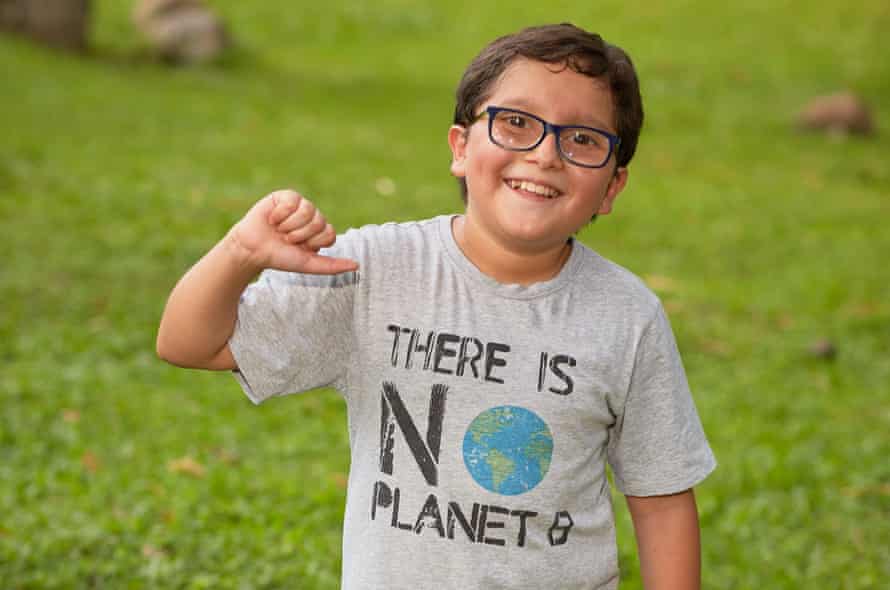Colombia’s 12-year-old eco-activist refuses to let death threats dim passion
Eight months after Francisco Vera was targeted on social media, no arrests have been made. But he continues to campaign for the wildlife he loves

Last modified on Mon 13 Sep 2021 15.04 EDT
Ever since someone threatened to kill her 12-year-old son, Ana Maria Manzanares says life has felt like Samuel Beckett’s Waiting for Godot.
In January, Francisco Vera was sent anonymous death threats on Twitter after the young environmentalist called for better access to education for children during the Covid-19 pandemic. The news caused outrage in Colombia and made headlines around the world. President Ivan Duque pledged to find the “bandits” that sent the message. Eight months later, nobody has been arrested. But the fear and anxiety have not gone away.
“The anguish of not knowing what you are waiting for or when it will arrive, but you wait for it nonetheless … it’s tough,” says Manzanares, comparing her situation to the Irish writer’s absurdist tragicomedy in which the two main characters wait for Godot, who never comes. “I am always watching out. The threat might never materialise. But from the moment you’re told about it – in a country like Colombia – you expect anything could happen at any moment.”
In 2020, for the second year running, the South American country was the most deadly in the world for environmental defenders, according to Global Witness, which recorded 65 killings. They include 55-year-old biologist Gonzalo Cardona, credited with saving the yellow-eared parrot from extinction, who was murdered by a criminal gang, and 38-year-old ranger Yamid Alonso Silva, who was killed near El Cocuy national park. Even though he is a child, Manzanares knows her son’s activism puts him at risk from groups that would rather he remained quiet.

Francisco is a well-known environmentalist and defender of Colombia’s extraordinary biodiversity that stretches from the high Andes to the Caribbean and Pacific coasts. He uses his social media profiles, which have thousands of followers, to campaign against fracking and mining – particularly in Andean moorland, Francisco’s favourite ecosystem, which is home to the spectacled bear and otherworldly flora. In a video call in March, Francisco, then 11, talks about the wildlife around his home in Villeta northwest of Bogota, showing photos he has taken of condors, woodpeckers, spiders and fungi.
Before speaking to Francisco, his mother asked me not to bring up the death threats. Instead, we discuss his disappointment at Colombia’s latest emission reduction targets for the Paris agreement, which he feels are not ambitious enough, and his passion for nature.
“Colombia is very biodiverse and very rich in natural resources. But there are other things going on and the environment is not always on the agenda of the government and citizens,” he says. Francisco has made friends with other young environmentalists around the world on Facebook and Twitter. “Social media is a tool for digital activists. It’s really important [for spreading messages].”
Shortly after the interview, Manzanares says they have taken down her son’s social media profiles after cyber-attacks and trolling. Francisco returned to digital activism last month.
After the death threat in January, the Colombian government gave Francisco a bodyguard. But what they really want, says his mother, is for someone to be brought to justice. Manzanares says she had anticipated threats over her son’s environmental activism but had not expected them to come so soon. Even so, she does not want to stand in the way of her son’s passion for nature.
“Some people have suggested we don’t talk about the threats so we do not re-victimise Francisco. But it’s something that’s happened and is well-documented … It hurts him. The tranquillity and life we had before are not coming back. Trying to hide it, to me, doesn’t seem right,” she says. “What we really want to know is where the threats came from and that they are prosecuted. That hasn’t happened yet.”
Find more age of extinction coverage here, and follow biodiversity reporters Phoebe Weston and Patrick Greenfield on Twitter for all the latest news and features
